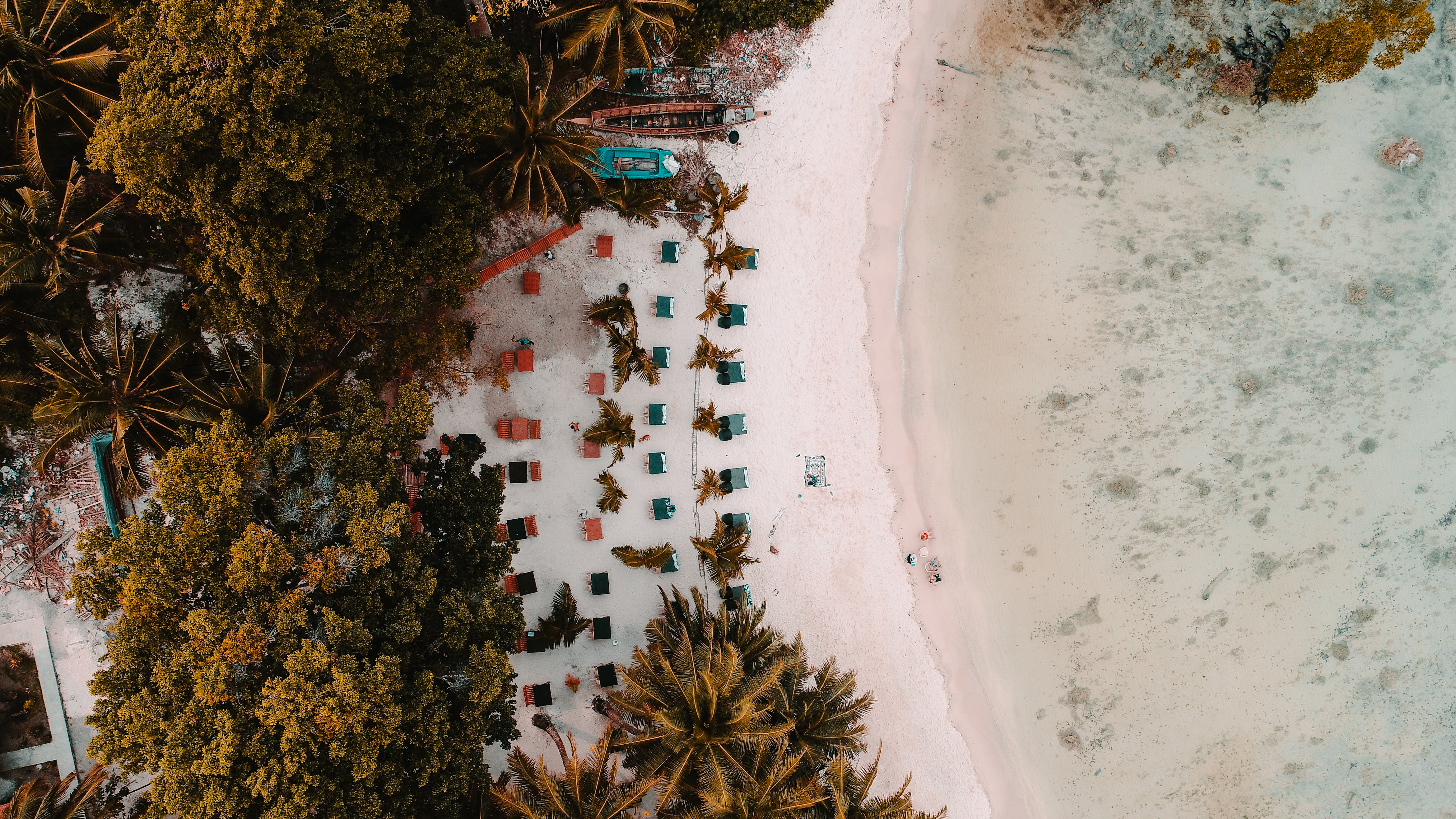
ABOUT ANDAMAN

Introduction to Andaman and Nicobar Islands:
Nestled in the embrace of the Bay of Bengal, the Andaman and Nicobar Islands stand as a
shimmering jewel in the vast expanse of the Indian Ocean. This archipelago, comprising over
500 islands, is renowned for its pristine beaches, coral reefs, and lush greenery. Home to a
myriad of indigenous tribes and unique flora and fauna, Andaman and Nicobar Islands
beckon travelers with promises of untouched beauty and rich cultural divers
The Andaman and Nicobar Islands indeed form a captivating destination with their
breathtaking natural beauty and cultural diversity. Let's delve a bit deeper into what makes
these islands so enchanting:
The Andaman and Nicobar Islands indeed form a captivating destination with their breathtaking natural beauty and cultural diversity. Let's delve a bit deeper into what makes these islands so enchanting:
Pristine Beaches: The islands boast some of the most beautiful and unspoiled beaches in the world. Radhanagar Beach on Havelock Island, often cited as one of the best beaches globally, is known for its turquoise waters and powdery white sands. Other notable beaches include Neil Island's Bharatpur Beach and the lesser-explored beaches on Little Andaman.
Coral Reefs: The Andaman and Nicobar Islands are surrounded by vibrant coral reefs, making them a haven for snorkelers and divers. The clear waters provide excellent visibility to explore the underwater world, with diverse marine life and colorful corals. Popular dive sites include North Bay, Mahatma Gandhi Marine National Park, and Cinque Island.
Lush Greenery: The islands are covered in dense tropical rainforests, offering a rich biodiversity. Trekking through the lush greenery is a popular activity for nature enthusiasts. Mount Harriet National Park, located in South Andaman, is known for its trekking trails and panoramic views of the surrounding islands.
Indigenous Tribes: The Andaman and Nicobar Islands are home to several indigenous tribes, including the Jarawas, Sentinalese, Nicobarese, and others. While contact with some of these tribes is restricted to protect their unique cultures, learning about their traditional practices and lifestyles is a fascinating aspect of the island’s cultural diversity.
Historical Significance: The islands have a rich history, with remnants of colonial-era architecture and structures. Cellular Jail in Port Blair stands as a poignant reminder of India's struggle for independence, and a visit to this historical site provides insight into the sacrifices made by freedom fighters.
Adventure Activities: Beyond the beaches and cultural experiences, the Andaman and Nicobar Islands offer a range of adventure activities. From water sports like scuba diving, snorkeling, and sea walking to trekking, island hopping, and exploring limestone caves, there's something for every adventure seeker.
Eco-Tourism Initiatives: The government has taken steps to promote eco-friendly and sustainable tourism in the region. Various initiatives focus on preserving the delicate ecosystems, promoting responsible tourism, and ensuring the well-being of the indigenous communities.
In essence, the Andaman and Nicobar Islands provide a unique blend of natural beauty, cultural richness, and adventure, making them a must-visit destination for those seeking an off-the-beaten-path tropical experience in the Indian Ocean.
Geography of Andaman and Nicobar Islands:
Spread across an area of approximately 8,249 square kilometers, the archipelago is divided into two groups – the Andaman Islands to the north and the Nicobar Islands to the south. Surrounded by the Bay of Bengal on the west and the Andaman Sea on the east, The topography of the islands is diverse and includes dense forests, mangrove-lined coastlines, and pristine beaches. The terrain varies from hilly and mountainous landscapes to flat stretches.s Let’s explore the geography of the Andaman and Nicobar Islands in more detail.Total Area & Location: The Andaman and Nicobar Islands are located in the southeastern part of the Bay of Bengal. The archipelago is situated between latitudes 6° and 14° North and longitudes 92° and 94° East. Division into Two Groups: The Andaman Islands are situated to the north of the archipelago. The Nicobar Islands are located to the south.The entire archipelago covers an approximate area of 8,249 square kilometers.
Island Groups: Both the Andaman and Nicobar Islands consist of numerous smaller islands, each with its unique features and attractions. The Bay of Bengal surrounds the western side of the islands. The Andaman Sea borders the eastern side.
Mangrove Ecosystems: Mangrove-lined coastlines are a prominent feature, especially in areas like Ritchie's Archipelago, showcasing the islands' ecological diversity. Understanding the geography of the Andaman and Nicobar Islands provides insights into the factors that contribute to their natural beauty, ecological significance, and the variety of experiences they offer to visitors. The islands are surrounded by extensive coral reefs, contributing to their ecological significance and making them a hotspot for marine biodiversity. Coral formations are particularly abundant in areas such as North Bay and Mahatma Gandhi Marine National Park. The islands' diverse topography supports a rich variety of flora and fauna. Dense rainforests are home to numerous species of plants, trees, and wildlife. The surrounding waters host a wide array of marine life, including various species of fish, coral, and other aquatic organisms.
Volcanic Origin: Geologically, the islands are of volcanic origin, and their formation is associated with tectonic activity.
Climate: The Andaman and Nicobar Islands experience a tropical climate, characterized by high humidity and temperatures that remain fairly consistent throughout the year. The region is subject to both the southwest and northeast monsoons, influencing the weather patterns.

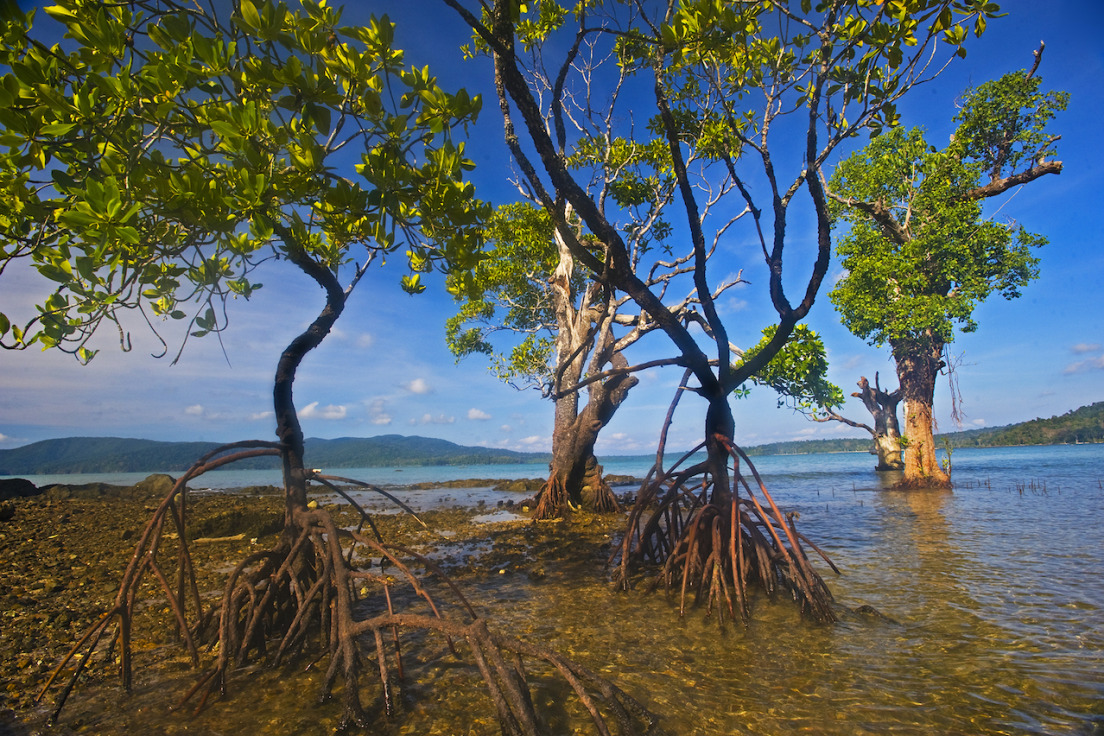
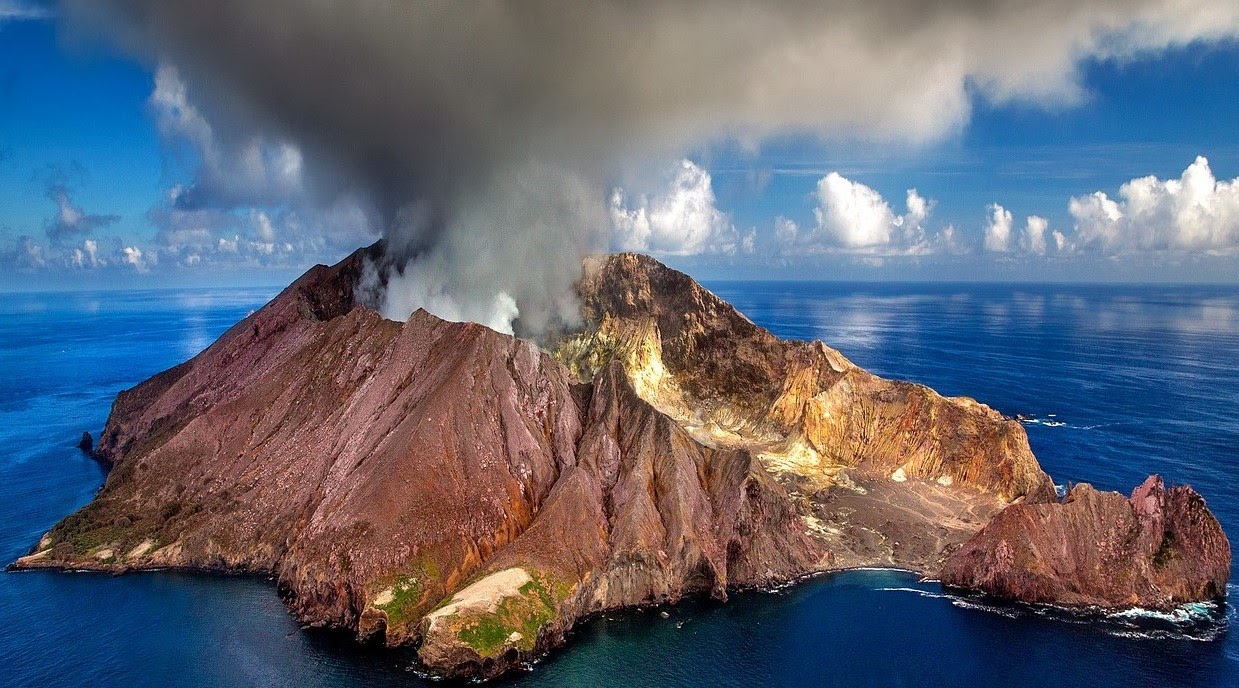
History of Andaman and Nicobar Islands:
The history of the islands is a tapestry woven with tales of colonial rule and the struggle for independence. Initially inhabited by various indigenous tribes, the islands witnessed Portuguese, Dutch, and British interests before becoming a British penal colony in the 19th century. The Cellular Jail in Port Blair stands as a stark reminder of this dark chapter, where many freedom fighters were incarcerated. Post-independence, the islands have transformed into a symbol of natural beauty and historical resilience. The history of the Andaman and Nicobar Islands is indeed a fascinating tapestry that unfolds over the centuries, marked by indigenous cultures, colonial influences, and the struggle for independence. The history of the Andaman and Nicobar Islands reflects a complex interplay of colonial interests, the struggle for independence, and the subsequent transformation of the islands into a symbol of resilience and natural beauty. The Cellular Jail stands as a solemn reminder of the sacrifices made during a crucial chapter in India's quest for freedom. Here's an overview: Indigenous Inhabitants: The islands were originally inhabited by various indigenous tribes, including the Great Andamanese, Onge, Jarawa, Nicobarese, and Sentinalese.These tribes had unique cultures and lifestyles, with some maintaining isolation from the outside world.European Exploration: The islands attracted the attention of European powers, with the Portuguese exploring the region in the early 16th century. Subsequently, the Dutch established a presence in the Nicobar Islands, while the British showed interest in the Andaman Islands.
Colonial Era: The British established a naval base on Chatham Island in the Andamans in the late 18th century. In the 19th century, the British began to use the Andaman and Nicobar Islands as a strategic location, especially after the First War of Indian Independence in 1857. In 1858, the islands officially became part of British India.
Penal Colony Period: The British, looking for a suitable location for a penal settlement, chose the Andaman Islands for the establishment of a penal colony. The Cellular Jail in Port Blair was constructed between 1896 and 1906 and became the infamous site where political prisoners, including many Indian freedom fighters, were incarcerated. The conditions in the Cellular Jail were harsh, and the prisoners endured immense suffering.
Struggle for Independence: The Cellular Jail played a significant role in the Indian independence movement, as it housed notable freedom fighters like Veer Savarkar, Batukeshwar Dutt, and others. The islands witnessed protests and uprisings against British rule. World War II: During World War II, the Japanese briefly occupied the Andaman and Nicobar Islands, leading to a turbulent period for the residents. Post-Independence Transformation: After India gained independence in 1947, the Andaman and Nicobar Islands ceased to function as a penal colony. The islands underwent significant development, and efforts were made to integrate them into the Indian mainstream. Over the years, the islands have evolved into a popular tourist destination, known for their natural beauty and diverse ecosystems.
Protection of Indigenous Tribes : In recent times, there has been a focus on protecting the rights and well-being of the indigenous tribes, with restrictions on contact to preserve their unique cultures.
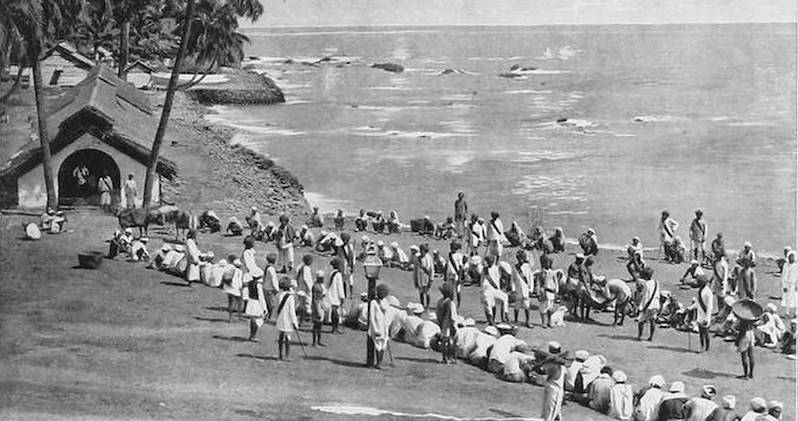

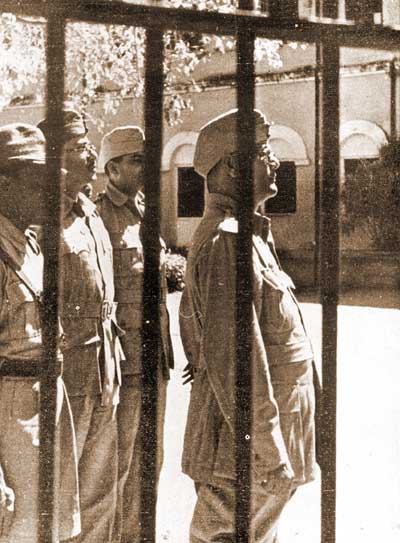
Culture of Andaman and Nicobar Islands:
The cultural fabric of the islands is a rich tapestry woven with influences from various communities. Indigenous tribes like the Nicobarese, Andamanese, and Jarawas contribute to the diverse cultural landscape. The traditional dance forms, music, and art of these tribes showcase their unique heritage. The islands also celebrate festivals like Subarnarekha and Nicobar Liberation Day, providing a glimpse into the vibrant cultural tapestry. In essence, the cultural landscape of the Andaman and Nicobar Islands is a dynamic interplay of indigenous traditions, external influences, and contemporary developments, making it a vibrant and diverse cultural tapestry. The celebration of festivals and the preservation of traditional arts contribute to the identity and charm of these islands.Indigenous Tribes: The Nicobarese, Andamanese, and Jarawas are among the indigenous tribes that have inhabited the islands for centuries. Each tribe has its own distinct culture, traditions, and languages, contributing to the rich cultural mosaic of the region. The tribes have unique practices related to dance, music, art, and rituals that reflect their close connection with the natural environment.
Traditional Dance and Music: Traditional dance forms play a significant role in the cultural expressions of the indigenous tribes. The dance styles are often characterized by rhythmic movements, colorful costumes, and symbolic gestures that convey stories and rituals. Music is an integral part of cultural celebrations, with traditional instruments and vocal performances adding to the festive atmosphere.
Art and Handicrafts: The indigenous tribes showcase their artistic skills through various forms of handicrafts and art. Handwoven baskets, wood carvings, and traditional pottery are some examples of the artistic expressions that have been passed down through generations.
Festivals: The islands celebrate a variety of festivals that provide insights into the cultural heritage of the communities. Subarnarekha, a festival celebrated by the Nicobarese community, involves rituals, dance performances, and feasting. Nicobar Liberation Day is another significant celebration, marking the day when the Nicobar Islands were liberated from Japanese occupation during World War II.
Cultural Integration: Due to historical influences, the cultural landscape of the Andaman and Nicobar Islands has also been shaped by communities from mainland India and other parts of the world. The islands have become a melting pot of cultures, and this is evident in various aspects such as cuisine, language, and religious practices.
Tourism and Cultural Exchange: The growing tourism industry in the islands has facilitated cultural exchanges, with visitors having the opportunity to witness and participate in local traditions. Cultural programs, traditional performances, and handicraft markets allow tourists to engage with and appreciate the diverse cultural heritage of the islands.
Conservation of Indigenous Cultures: Efforts are made to protect the rights and cultural integrity of the indigenous tribes. Contact with certain tribes is restricted to preserve their unique way of life. The government and local communities work towards balancing tourism with the conservation of indigenous cultures and the environment.
People of Andaman and Nicobar Islands: The islands are home to a melting pot of cultures and communities. The indigenous tribes, with their distinct languages and traditions, coexist with settlers from the mainland, creating a harmonious blend of diversity. The resilience and adaptability of the islanders, especially the tribal communities, are integral to the unique identity of the Andaman and Nicobar Islands. The people of the Andaman and Nicobar Islands contribute to the unique and diverse identity of the region. The harmonious coexistence of indigenous tribes and settlers reflects the resilience, adaptability, and cultural richness that define the social fabric of these enchanting islands. The people of the Andaman and Nicobar Islands form a diverse and harmonious community, characterized by a blend of indigenous tribes and settlers from the mainland.


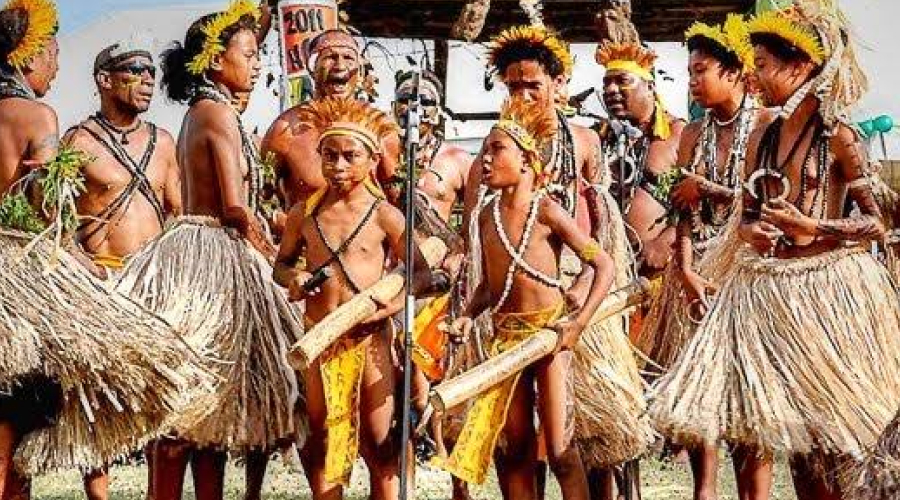

Here are key aspects of the population:
Indigenous Tribes: The islands are home to several indigenous tribes, including the Nicobarese, Andamanese, Jarawas, Onge, and Sentinels tribes have distinct languages, cultures, and traditions that have evolved over centuries. Many of these tribes have faced challenges, including external influences and changes to their traditional way of life.Nicobarese Community: The Nicobarese, primarily residing in the Nicobar Islands, are known for their vibrant culture and traditions. They have a close connection to the sea and engage in activities like fishing and agriculture. Festivals such as Subarnarekha are celebrated with enthusiasm, showcasing their cultural richness.
Andamanese Tribes The Andamanese tribes, including the Great Andamanese and Onge, have witnessed a decline in population and face challenges related to cultural preservation. Efforts are made to protect the rights and well-being of these tribes, including restrictions on contact to preserve their unique cultures.
Mainland Settlers: The islands have attracted settlers from mainland India, contributing to the cultural diversity. People from various states and ethnic backgrounds have made the Andaman and Nicobar Islands their home, bringing with them a mix of languages, cuisines, and traditions.
Resilience and Adaptability: The islanders, especially the indigenous tribes, have demonstrated resilience and adaptability in the face of historical challenges, including colonial rule and changes in their environments. The ability to adapt to changing circumstances is integral to the unique identity of the Andaman and Nicobar Islands.
Cultural Integration: The coexistence of indigenous tribes and settlers has led to a cultural integration that is evident in various aspects of daily life, including food, language, and festivals. The islands serve as a melting pot of cultures, fostering a sense of unity in diversity.
Economic Activities: Fishing, agriculture, and tourism are among the key economic activities for the islanders. The diverse ecosystems of the islands provide livelihood opportunities, and the tourism industry has played a role in the economic development of the region.
Tourism and Cultural Exchange: The growing tourism industry has facilitated cultural exchanges between the local communities and visitors. Cultural programs, traditional performances, and interactions with indigenous tribes offer tourists a glimpse into the rich heritage of the islands.
Tourism of Andaman and Nicobar Islands:
Andaman and Nicobar Islands have emerged as a sought-after tourist destination, offering a range of experiences for nature enthusiasts and adventure seekers. Pristine beaches like Radhanagar and Elephant Beach, the vibrant marine life of Mahatma Gandhi Marine National Park, and the limestone caves of Baratang Island are just a glimpse of the treasures awaiting exploration. Water activities, including snorkeling, scuba diving, and island hopping, add to the allure of this tropical paradise.The Andaman and Nicobar Islands cater to a diverse range of interests, making them an ideal destination for nature lovers, adventure seekers, and those seeking a tranquil tropical getaway. The islands' pristine beauty, coupled with a variety of activities, creates a memorable and immersive experience for visitors Andaman and Nicobar Islands have become a popular and sought-after tourist destination, attracting visitors with their natural beauty, diverse ecosystems, and a range of adventure activities. Here's an overview of the tourism scene in the islands:
Pristine Beaches:
The Andaman and Nicobar Islands consist of numerous smaller islands, and island hopping is a popular activity. Each island has its unique attractions, from serene beaches to historical sites. Radhanagar Beach The best beaches globally,in Havelock Island is renowned for its white sand and turquoise waters. Marine National Parks: Mahatma Gandhi Marine National Park: Located near Wandoor, this national park is a haven for marine life.
Adventure Activities:
Another picturesque spot on Havelock, Elephant Beach is known for its coral reefs and vibrant marine life. The islands offer a range of water sports, including kayaking, jet skiing, and parasailing, providing thrilling experiences for adventure enthusiasts.
Snorkeling:Snorkeling and glass-bottom boat rides allow visitors to witness the colorful coral r eefs and a variety of fish species. The clear waters surrounding the islands make snorkeling a favorite activity. North Bay Island, Jolly Buoy Island, and Red Skin Island are popular snorkeling spots.
Scuba Diving: The islands are a scuba diver's paradise, with vibrant coral reefs and diverse marine life. Havelock Island, Neil Island, and Cinque Island are known for excellent dive sites.
Sea Walking: For those who want to experience underwater life without diving, sea walking is a unique activity where participants walk on the seabed with a helmet providing air.
Baratang Island and Limestone Caves:
Baratang Island is known for its natural wonders, including limestone caves. Visitors can take a boat ride through mangrove creeks and then explore the caves formed by the deposition of calcium carbonate.
Historical Sites:
Cellular Jail: A historical site in Port Blair, the Cellular Jail is a reminder of the is past as a British penal colony. Light and sound shows narrate the struggles of freedom fighters who were imprisoned here.
Ross Island: Once the administrative headquarters of the British, Ross Island is now in ruins. Visitors can explore the remnants of colonial buildings and the British cemetery.
Cultural Experiences: Tourists have the opportunity to engage in cultural experiences, attend traditional dance performances, explore local markets, and interact with indigenous communities respectfully.Eco-Tourism Initiatives: The government has implemented eco-tourism initiatives to promote sustainable and responsible tourism. This includes efforts to conserve the delicate ecosystems and protect the indigenous tribes.
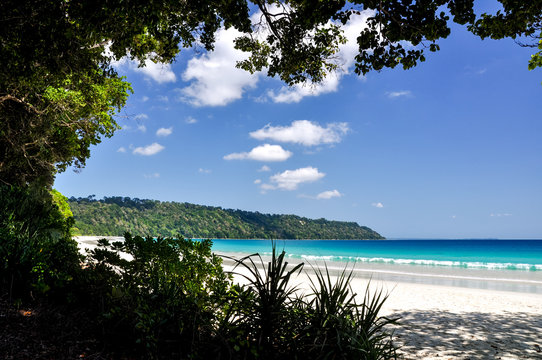
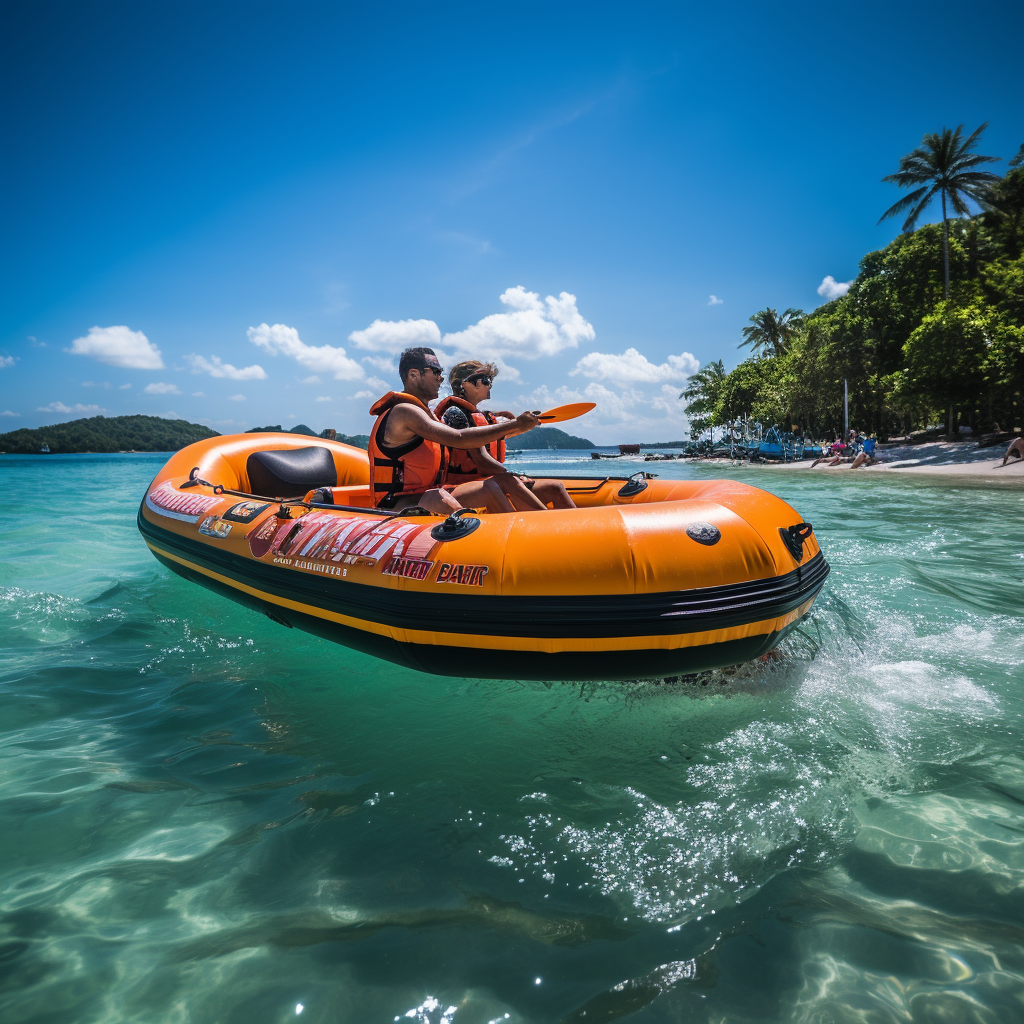
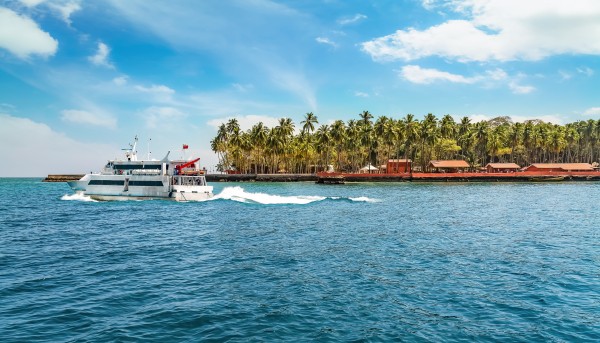

Importance of Andaman and Nicobar Islands:
Beyond their tourism appeal, the islands play a strategic role in the geopolitics of the region. The Indian Navy and the Andaman and Nicobar Command have a significant presence, enhancing the security posture of the country. The archipelago's biodiversity, with several endemic species, adds to its ecological importance, warranting conservation efforts. In conclusion, the Andaman and Nicobar Islands captivate with their natural splendor, cultural diversity, and historical significance. Whether it's the sun-kissed beaches, the vibrant marine life, or the echoes of a storied past, these islands beckon travelers to immerse themselves in an experience that transcends the ordinary. As they stand at the crossroads of history and modernity, the Andaman and Nicobar Islands continue to enchant and inspire, inviting the world to explore their captivating shores.
The Andaman and Nicobar Islands hold significant importance on multiple fronts, extending beyond their appeal as a tourist destination. Here are some key aspects highlighting their importance: the Andaman and Nicobar Islands hold multifaceted importance, encompassing strategic geopolitical considerations, ecological significance, cultural heritage, and economic contributions. Their allure extends beyond the surface, inviting exploration and offering a unique blend of history, natural splendor, and cultural diversity to those
Geopolitical and Strategic Significance:
The islands are strategically positioned in the Bay of Bengal, providing a crucial vantage point for India's maritime security. The Indian Navy and the Andaman and Nicobar Command have a strong presence, contributing to the country's defense capabilities and enhancing maritime surveillance.
Maritime Security: The islands serve as a key location for monitoring and securing sea routes in the region, playing a vital role in ensuring the security of India's maritime borders.
Natural Biodiversity and Conservation:
The Andaman and Nicobar Islands boast rich biodiversity, with many species, including several that are endemic to the region. Conservation efforts are essential to protect the unique flora and fauna, and the islands serve as a living laboratory for ecological studies.
Endemic Species: The islands are home to a variety of plant and animal species found nowhere else in the world. The conservation of these endemic species contributes to global biodiversity.
Environmental Research:
The diverse ecosystems, including coral reefs and tropical rainforests, make the islands a valuable location for environmental research and studies related to climate change and biodiversity conservation.
Historical and Cultural Heritage: The Cellular Jail in Port Blair and other historical sites bear witness to the islands' role in India's struggle for independence. The cultural diversity, including the presence of indigenous tribes, adds to the islands' cultural heritage and significance.
Tourism and Economy: Tourism is a significant economic driver for the islands, contributing to local livelihoods and the regional economy. The natural beauty, adventure activities, and historical sites attract tourists from around the world.
Eco-Tourism Initiatives: The islands have embraced eco-tourism initiatives to balance tourism with the conservation of natural resources and the protection of indigenous communities.
Natural Disaster Preparedness: The islands are prone to natural disasters such as earthquakes and tsunamis. Preparedness and early warning systems are crucial for minimizing the impact of such events.
Crossroads of History and Modernity: The islands serve as a symbolic crossroads, where historical significance meets modern development. This intersection reflects the islands' evolving role in the changing dynamics of the region.

